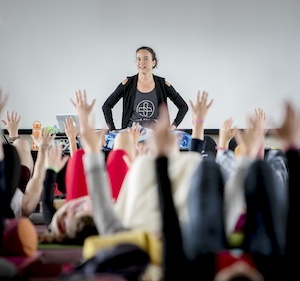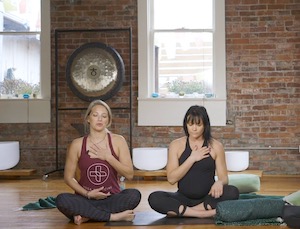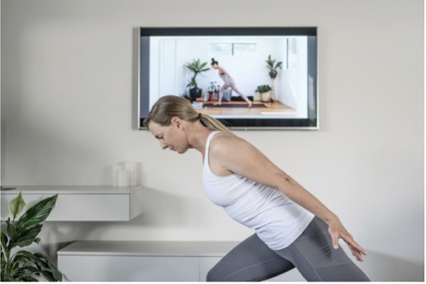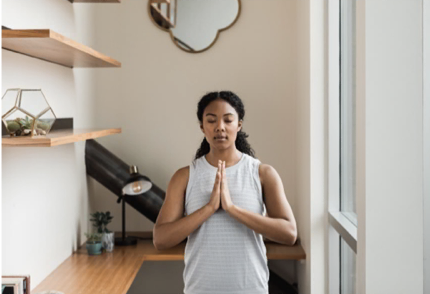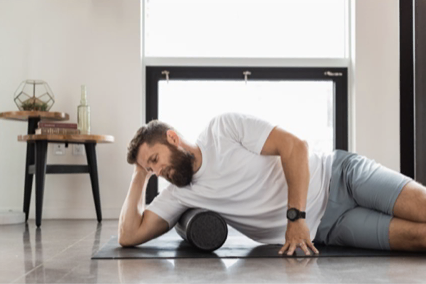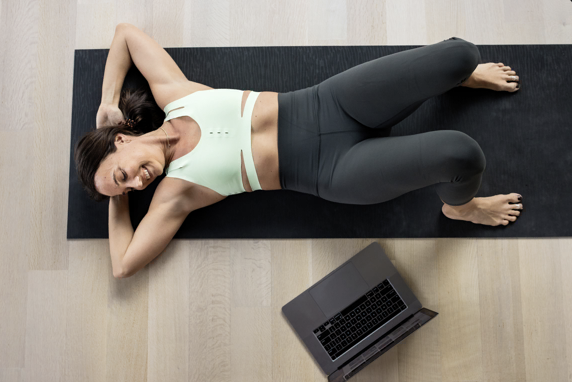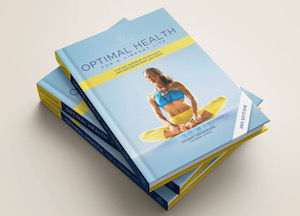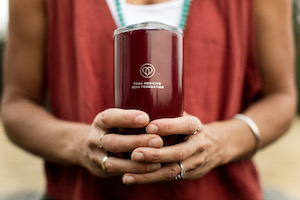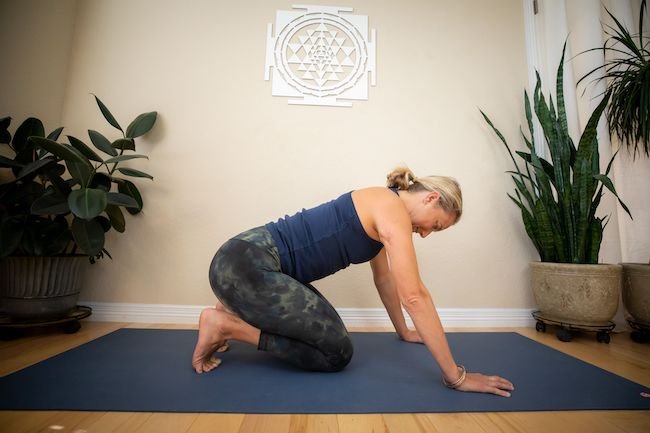Allie Geer, Articles, In the Press, Myofascial Release, Resources, Yoga Medicine® News
Calf Cramps? A Short Release Practice
By Allie Geer for YourZenMama.
Calf cramps? We’ve all experienced them. Especially during pregnancy. Whether it wakes us up in the middle of the night, or while we’re hanging out on the couch watching our favorite show. They sneak up on us, and can be quite painful. Using a combination of self myofascial release and movement we can promote circulation and blood flow into this area which may help to reduce, if not eliminate calf cramps within the body.
Self myofascial release is a practice that uses tools to help unwind tension in your body. With tools such as balls, blocks and foam rollers we can release these areas and reduce pain. When combined with movement, it can be a powerful anecdote to discomfort. The following practice will help to reduce the discomfort we experience in the legs also known as “Charlie horses.”
What you will need: A foam roller, a block and 2 tennis balls.
*When working with the tools, sensation should never be sharp, shooting or painful. The idea is to soften into sensation through the guidance of the breath. Please avoid rolling over any varicose veins or areas of injury.
1. Release for the Feet

Starting with the right heel press the heel into the tennis ball and rock your heel from side to side. Then place the ball under the ball of the foot and rock the foot across from side to side. Next, roll from the ball of the foot towards the heel in the direction of the heart with pressure that feels tolerable. Repeat for several times. Then with a light superficial touch began to softly scribble all over the bottom of the ball. This will enhance your body’s awareness of where it is in space, but it also helps to clean up the area of any toxins that may be living in our tissues. Repeat on the second side. This can be a really good supportive practice to help get blood flow moving through your entire body.
2. Movement: Broken Toe Pose

From table top position tuck all ten toes into the floor. Using the hands slowly start to walk your hands back shifting your hips towards your heels. This will put pressure on the feet and start to deeply stretch the plantar fascia. Try to stay for 30 seconds to a minute taking long deeps breaths. Slowly come out of the posture by walking back out to table top.
3. Release for the Calves

Using a foam roller begin by draping one or both legs over the roller just above the Achilles tendon. Using the hands to support you begin to roll up and down in the lower leg. Next, maintaining contact on the roller, rock your feet from side to side. Now try pointing and flexing the foot and taking the foot into circles. Move the roller up to the mid-calf and repeat.
4. Movement: Calf Stretches at Wall

Stand facing a wall and place both feet on the block. Using the support of the wall walk the heels back so both heels are dangling off the ledge. Bend one knee while dropping the opposite heel lower and switch. Repeat several times getting a big stretch throughout the calves.
5. Release for the Hamstrings

Begin seated on the floor and locate your sit bones under the pelvis (the boney protrusions that we can feel in our seat). Place the ball directly below the sit bone (in the direction of the knee) right at the attachment site of the hamstrings. Let your legs get heavy and start to shift your hips forward and backward like you might be wagging your tail. Next, with the legs relaxed drag them across the floor rolling over the balls. Try not to engage your thighs to do the work. There may be some tenderness here, and remember if it’s sharp, shooting or painful to please work around that site.
6. Movement: Downward Facing Dog

From table top or all fours position, tuck the toes into the floor. Shift your hips back towards your heels and lift the hip towards the ceiling making a upside down V shape with your body. Stretch through the backs of the legs. Try peddling out the legs by bending on knee and straitening the other reaching through the heel of the foot. Take 5 long deep breaths and slowly lower back down to table top.
Use this sequence as needed whenever discomfort arises in the legs.

